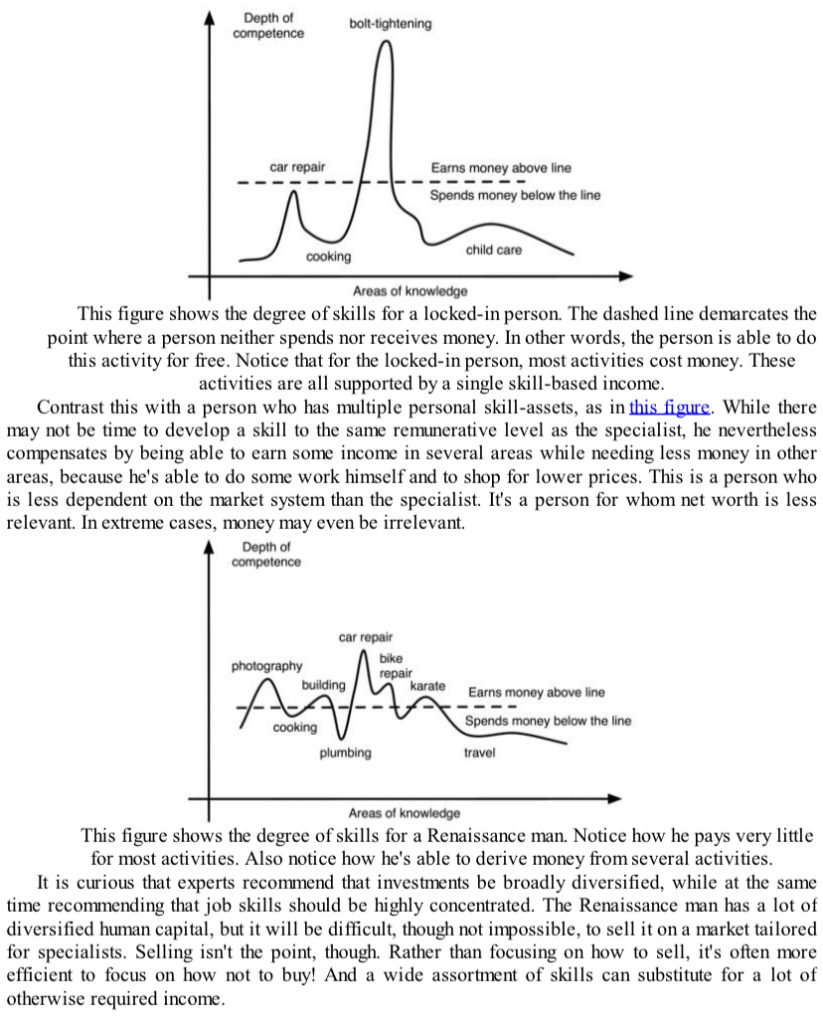From this short blog post that made it to Hacker News:
And I do all those things pretty poorly, if you compare the result of each individual thing I might do with the outcome of a specialist.
But as a generalist I have an advantage over a specialist: I will never say “this is not something I do”.
– On Being a Generalist
I’m reminded of Jacob Lund Fisker’s Early Retirement Extreme, which is destined to be a classic for the ages. It describes the Renaissance Man, who has adequate levels of competence across a wide range of everyday skills, and therefore needs to call upon a specialist only in rare, edge-of-probability-curve cases, even though he or she may not be the best in a particular specialisation. He describes it with these elegant charts

